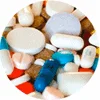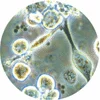Pure Flow UK offers advanced purification systems, from leading Korean brands, by using the existing water source and removing up to 99% of any impurities that can be found in typical tap water.


eg. Medicine & Antibiotics

eg. Covid-19 & cholera

eg. legionella & e-coli

eg. estrogren & testosteron

eg. nitrate & PFAS

PE, PET & nicrobeads

eg. lead & mercury

eg. Plant, animal and human natural organic matter (NOM)

eg. Dirt Rust Dust
Non-purified water can contain a wide range of impurities, including bacteria, viruses, chemicals, and heavy metals. The purity of tap water is influenced by several factors. Primarily, it may depend on the original source of tap water such as rivers, lakes, or underground aquifers. Additionally, water can pick up contaminants during its journey through water distribution systems and pipes, which may include industrial pollutants, agricultural run-off and aging infrastructure.
Ensuring safe drinking water requires effective treatment processes to remove these impurities. Municipal water treatment plants typically employ various methods such as filtration, sedimentation and disinfection to purify water. However, the effectiveness of these treatments can vary and occasional breaches or failures in the system can lead to contamination.
This stage begins with a layer of sediment filtration, which removes contaminants more than 5 microns in size including: suspended solids, rust, dust, dirt and debris. This first stage of filtration minimises flow caused by turbid material larger than 5 microns in order to prepare your water for the second stage of filtration.
This filtration stage is composed of coconut-based and acid-rinsed raw materials that were compressed at high temperatures. With its remarkable surface area capacity, it exhibits exceptional absorption potential.
This stage achieves a 99.99% removal rate of a wide range of chemicals, including chlorine, benzene, trihalomethane compounds, volatile organic chemicals (including pesticides and herbicides), radon, solvents, and a greater number of other synthetic compounds often found in tap water. When water passes through this stage, materials causing bad taste and odours are removed.
This is where the magic happens!
Unlike conventional Ultrafiltration filters, this filter operates innovative Nanotechnology with Cellulose Nanofiber technology. Its unique structure combines small overall pore size with a large pore area, producing extremely fast kinetics for adsorption. This gives it an unparalleled, non-powered filtration capability.
NanoFACT® PLUS can remove the same impurities as ultrafiltration, such as bacteria, pharmaceutical residue, heavy metals, PFAS and microplastics and it can also remove components that are up to 10 times smaller, such as finer harmful substances including organic matter and most viruses (including Noroviruses).
This happens while retaining healthy minerals. It has a 99.999% reduction rate of pathogenic bacteria, and a 99.99 reduction rate of water-borne viruses.
It acts as a polisher- further improving the taste and quality of purified water. The post-carbon filter is usually used in the last stage of water purification. They further remove traces of residual chlorine and organic chemicals for crisper, pure drinking water.
Filter media may contain fine Mg particles which allow certain ions to pass through while blocking others. This process results in the production of mildly alkaline water with reduced acidity and gives water antioxidant properties.
